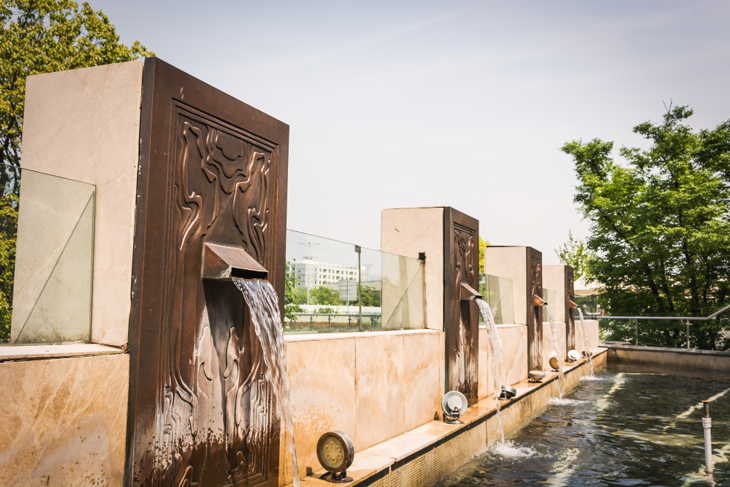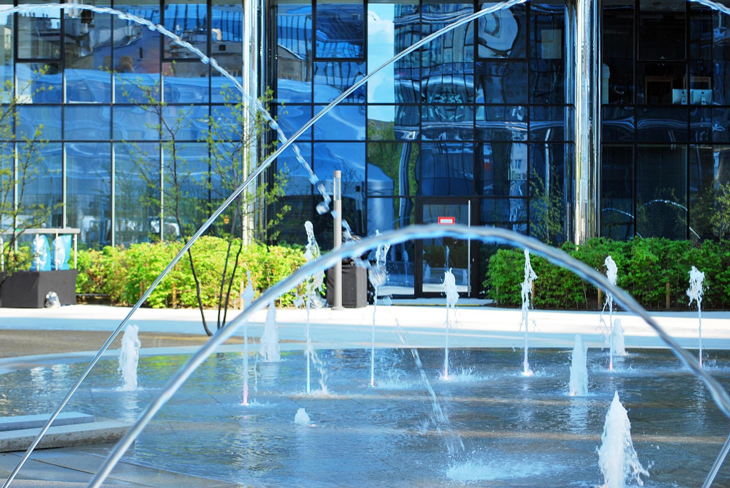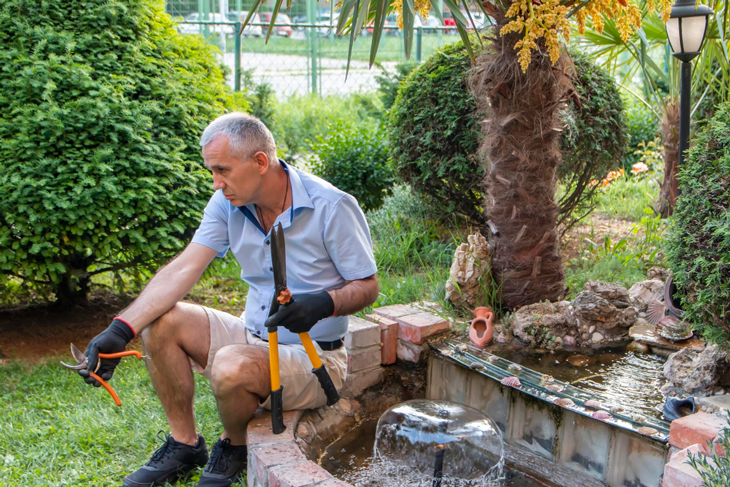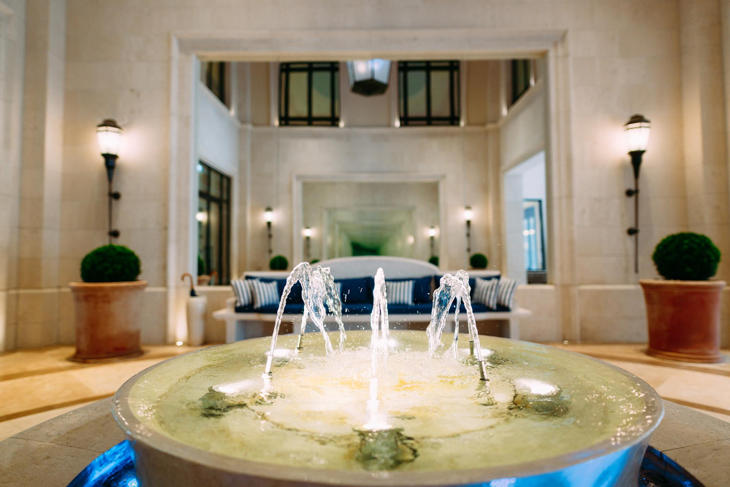The Historical Evolution of Fountains: From Ancient Necessity to Modern Luxury
Water fountains are far more than decorative features in our gardens and homes—they represent one of humanity's longest-standing relationships with functional art. The story of fountains traces a fascinating journey from critical infrastructure to artistic expression, reflecting changing technologies, cultural values, and aesthetic sensibilities across millennia.
Ancient Origins: Necessity and Innovation
The earliest fountains emerged not as decorative elements but as essential public utilities:
Mesopotamian Beginnings: Archaeological evidence suggests that the earliest fountain-like structures appeared around 3000 BCE in Mesopotamia, where engineers created systems to regulate water flow from natural springs. These rudimentary fountains served the crucial function of providing accessible drinking water in developing urban centers.
Egyptian Advancements: Ancient Egyptian gardens featured rectangular pools and simple fountains as early as 2000 BCE, primarily for practical irrigation and cooling effects in their arid climate. Court documents describe "water that shoots upward" in palace gardens, suggesting pressure systems that created vertical water displays.
Persian Paradise Gardens: The Persian concept of "chahar bagh" (four gardens) incorporated fountains as central elements around 500 BCE. These gardens used gravity and carefully calculated water pressure to create fountains that symbolized life in otherwise hostile environments.
Classical Refinement: Greece and Rome
It was in the classical world that fountains began their transformation from purely utilitarian structures to artistic statements:
Greek Aesthetics: The ancient Greeks elevated fountains with architectural enclosures called "nymphaea," dedicated to water nymphs. These structures combined practical water access with religious significance and emerging aesthetic concerns. The famous Pirene Fountain complex in Corinth featured a series of basins and spouts decorated with mythological scenes.
Roman Engineering Mastery: The Romans revolutionized fountain technology through their aqueduct systems and understanding of hydraulic principles. By the 1st century CE, Rome boasted nearly 1,500 public fountains throughout the city, ranging from simple basins for drinking water to elaborate sculptural displays. The engineering precision of Roman fountains wouldn't be matched for nearly a thousand years after the empire's fall.
Function and Symbol: Roman fountains served multiple practical purposes—providing drinking water, cooling public spaces, and masking urban noise—while simultaneously functioning as symbols of imperial power and engineering prowess. The ability to command water demonstrated dominion over nature itself.
Medieval Transitions and Islamic Influence
As Roman infrastructure declined in Western Europe, fountain development took different paths:
Monastery Gardens: In medieval Europe, fountain technology was largely preserved in monastery gardens, where fountains served both practical needs and symbolic representations of paradise. Typically simple in design, these fountains emphasized function over decorative elements.
Islamic Golden Age: The most significant fountain innovations during the medieval period came from the Islamic world. The mathematical understanding of hydraulics advanced tremendously, with engineers creating fountains that changed their spray patterns and even musical fountains. The courts of Baghdad, Cairo, and ultimately Islamic Spain developed increasingly sophisticated water features.
Alhambra Perfection: Perhaps the pinnacle of medieval fountain design, Spain's Alhambra palace complex (13th-14th centuries) featured fountains that combined mathematical precision, acoustic properties, and spiritual symbolism. The famous Lion Fountain demonstrated engineering capabilities that wouldn't be common in Western Europe for centuries.
Renaissance Rebirth and Baroque Theatricality
The Renaissance reawakened interest in classical forms and hydraulic engineering:
Italian Innovation: 15th and 16th century Italian designers rediscovered ancient Roman texts on hydraulics and began creating increasingly elaborate fountains. The hillside Villa d'Este near Rome featured over 500 fountains, jets, and water features, using gravitational pressure from elevated reservoirs to create spectacular effects without mechanical pumps.
Integration with Sculpture: Renaissance fountains became increasingly sculptural, with water and stone working in harmony. Artists like Bernini created fountains where water became an essential expressive element of the sculpture itself, as in his masterpiece Fountain of the Four Rivers in Rome's Piazza Navona (1651).
Baroque Spectacle: By the 17th century, fountains reached new heights of theatrical drama. The fountains of Versailles under Louis XIV represented political power through water mastery, with displays requiring enormous reservoirs and primitive pumping systems. The Grande Cascade used 10,000 cubic meters of water per day when operating—a staggering amount for its time.
Industrial Revolution: Democratizing Fountains
Technological advances dramatically changed fountain possibilities:
Cast Iron and Mass Production: The 19th century saw fountains become more accessible through cast iron manufacturing. Designs could be mass-produced, bringing decorative fountains within reach of public parks and middle-class gardens. Famous examples include New York's Bethesda Fountain (1873) and the fountains of Trafalgar Square in London.
Electric Pumps: The development of electric pumps in the late 19th century freed fountains from dependence on gravity and natural water pressure. This technological leap allowed fountains to be placed anywhere, regardless of natural water sources or elevation.
Public Space Enhancement: Victorian urban planning embraced fountains as civilizing elements in public spaces. Cities worldwide installed elaborate fountains in parks and squares as symbols of civic pride and public health.
Modern Expressions: 20th Century to Today
The 20th century brought radical reinvention of the fountain concept:
Modernist Simplification: Early 20th-century designers like Isamu Noguchi created fountains with clean lines and abstract forms, rejecting the ornate decoration of previous eras in favor of focusing on water's essential qualities.
Integration with Architecture: Mid-century design saw fountains becoming integral components of architectural planning rather than simply decorative additions. Falling water walls and reflecting pools became signature elements of modernist buildings.
Technological Spectacle: The latter half of the 20th century introduced computer-controlled fountains capable of choreographed displays synchronized with music and lighting. The Bellagio fountains in Las Vegas (1998) represent this approach, using over 1,200 individually programmed water jets to create complex performances.
Interactive Experiences: Contemporary fountain design often emphasizes human interaction, with splash pads and walkable water features becoming common in urban spaces. These designs democratize the experience of water features, inviting direct engagement rather than distant admiration.
Environmental Sensitivity: Today's cutting-edge fountains often incorporate sustainability principles, using rainwater collection, solar pumps, and water-conserving designs that acknowledge resource limitations while still creating beauty.
The Enduring Allure of Falling Water
Throughout this remarkable evolution, certain fundamental aspects of fountains remain constant:
Multisensory Appeal: The combination of visual movement, sound, touch, and the subtle cooling effect of moving water continues to captivate human senses just as it did millennia ago.
Psychological Impact: The documented calming effect of moving water transcends time and culture, representing a rare constant in human aesthetic experience.
Technical Achievement: From ancient Roman gravitational systems to today's computer-controlled displays, fountains have always represented the cutting edge of their era's technical capabilities.
As we install fountains in our contemporary spaces, we participate in this rich historical tradition—one that connects us to generations of humans who have found beauty, meaning, and refreshment in the controlled movement of water. Whether you choose a design that echoes classical forms or embraces cutting-edge technology, your fountain carries this cultural heritage into the present day.
Visit The Fountain Factory showroom to see how today's fountain designs both honor traditional forms and embrace contemporary innovations for modern spaces.




